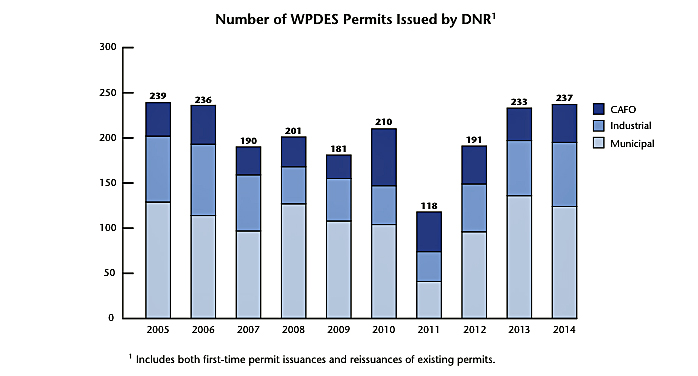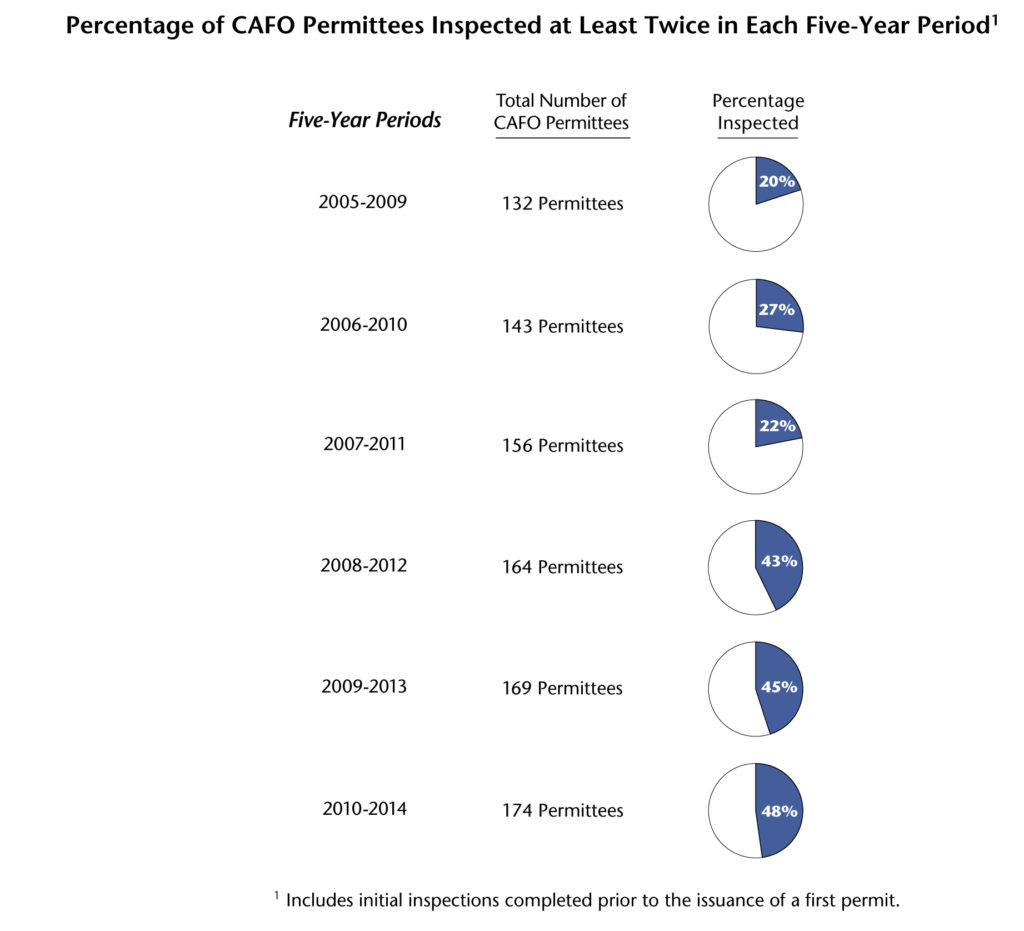Report: DNR Has Failed to Protect Water
- Share
- Tweet
- Pin
- Share

A recently released report from the Legislative Audit Bureau (LAB) confirmed what many have been saying for some time – the Wisconsin Department of Natural Resources is incapable of meeting its statutorily required wastewater permitting and enforcement duties.
The report found the DNR did not follow through with 94.1 percent of violations from 2005 to 2014.
 “We found that DNR did not consistently follow its policies when issuing enforcement letters, known as notices of violation, to municipal and industrial permittees,” wrote State Auditor Joe Chrisman in an introductory letter to the report. “From 2005 through 2014, DNR issued notices of violation in 5.9 percent of the instances in which they should have been issued based on DNR’s policies. We also found the extent to which these letters were issued varied among DNR’s five regions, as did the frequency with which DNR took enforcement actions for CAFO permittees.”
“We found that DNR did not consistently follow its policies when issuing enforcement letters, known as notices of violation, to municipal and industrial permittees,” wrote State Auditor Joe Chrisman in an introductory letter to the report. “From 2005 through 2014, DNR issued notices of violation in 5.9 percent of the instances in which they should have been issued based on DNR’s policies. We also found the extent to which these letters were issued varied among DNR’s five regions, as did the frequency with which DNR took enforcement actions for CAFO permittees.”
The nonpartisan Legislative Audit Bureau undertook the study of DNR practices upon the request of Sen. Rob Cowles, Green Bay, co-chair of the Joint Legislative Audit Committee.
“I sensed there was a problem there, but this points out pretty clearly that we have a pretty big problem that may have spanned several administrations,” Cowles told the Pulse. “It’s not just this administration, but this administration has the levers of power. They’ve apparently made a commitment to fix it. We’ll see if they follow through with that.”
Cowles said there were three particularly alarming findings in the report.
“I’m concerned about the backlog,” he said. “I’m concerned about the apparent lack of enforcement when there is a violation. And CAFOs are self-enforcing. Wow! Those are the biggies. Those are three that jump out at you.”
Regarding backlogs, the report notes that the DNR established a goal to limit its Wisconsin Pollutant Discharge Elimination System (WPDES) permit backlog to no more than 10 percent for both municipal and industrial permits and to no more than 15 percent for CAFO permits.


“From 2005 through 2015, DNR met its goal of having no more than a 10 percent backlog for municipal permits for four of these 11 years, but never met this goal for industrial permits. In addition, DNR met its goal of having no more than a 15 percent backlog for CAFO permits for nine of the 11 years we reviewed,” the report states.
On enforcement, the report found: “Enforcement actions taken by DNR for municipal and industrial permittees showed a general decline from 2005 through 2014. We found that DNR issued a notice of violation for only 33 of the 558 instances (5.9 percent).”
Cowles’ comment on CAFOs being self-enforcing refers to a section of the report titled “Reporting by CAFO Permittees,” which says: “Because CAFO permittees have no effluent testing requirements…DNR largely relies on the permittees themselves to monitor their activities, inspect their operations, and report annually to DNR.”
The report also notes that as of last November, the DNR required 12 CAFO permittees to have monitoring wells on their property and test water samples at least quarterly, yet five of the 12 exceeded their permit levels for certain pollutants, including nitrate, fecal coliform bacteria, nitrogen and chloride.

After each area of inquiry, the LAB report makes corrective recommendations and requires the agency to report back with progress in correcting problems by Nov. 1, 2016.
The report also found a high turnover – 14.5 percent – among staff overseeing CAFO permittees. To help reduce the turnover rate, the DNR requested a $2 per hour wage increase for at least seven staff members overseeing CAFO permitting. However, the request was denied.
“So they’re understaffed,” Cowles said. “I’ve asked the auditor for a recommendation on what it would take to get the staffing level to take care of the various problems identified in the audit. I’m waiting for that. It will take a while.”
The report devoted a separate chapter to Kewaunee County, pointing out that “a random sample of 320 wells in Kewaunee County found that 110 (34.4 percent) were contaminated with bacteria or unsafe levels of nitrates.”
The report mentions the five workgroups that were established to address Kewaunee County’s water issues, and charges the DNR with reporting back to LAB by Nov. 1 the “extent to which it plans to implement the recommendations” made by the workgroups, as well as to update on the status of DNR efforts to address groundwater contamination in the county, including identifying the likely source of contamination (the report states that the “DNR has not determined whether groundwater in Kewaunee County has been contaminated by CAFO operations, it has begun working with federal, state and local agencies, as well as CAFO permittees, to study the issue.”).
“Although solutions won’t come overnight, it is important that we address our water quality issues in a comprehensive manner,” Cowles said.

